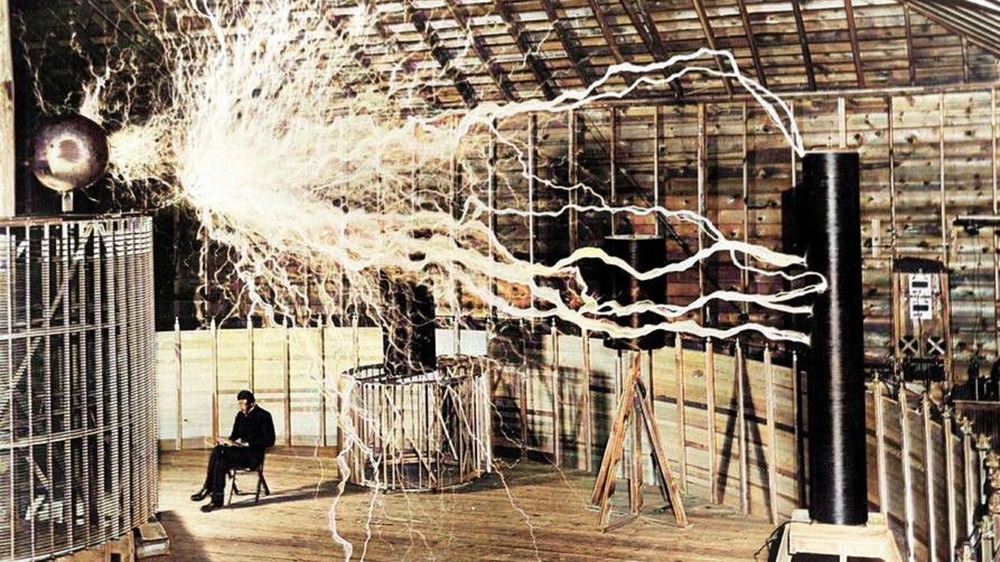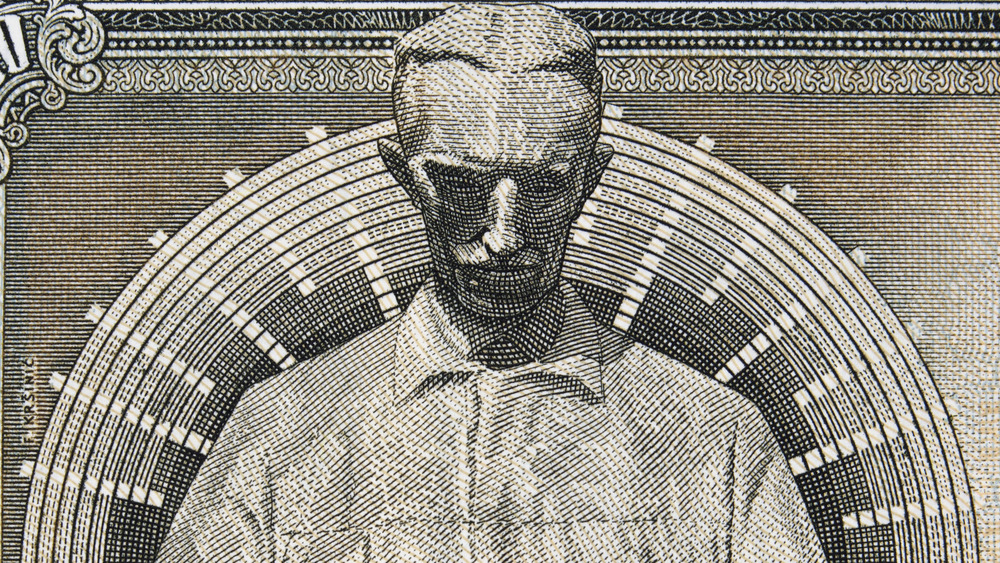This Is What Tesla's Death Ray Was Meant For
Nikolai Tesla has come to be nerdom's and science's beloved poster child of true, unjustly overlooked scientific genius, particularly as thwarted by evil, bloated capitalists like Thomas Edison. It's true that Edison did Tesla royally dirty by hiring Tesla at the Continental Edison Company, promising him $50,000 for an improved DC (direct current) dynamo design, and then just, you know, not paying him. Instead, as History explains, Edison mocked Tesla's naivety, and when Tesla joined forces with George Westinghouse to promote their more advanced AC (alternating current) design, Edison tried to discredit their work by using an AC machine to electrocute live animals in front of an audience. Spiteful sore loser and sociopath, much?
Nonetheless, Tesla's legacy has only continued to grow over time. Far more eccentric and prolific of an imagineer and inventor than he ever was a businessman, Tesla nonetheless has 300 historical patents ascribed to his brilliance, most of them after he left Edison and formed Tesla Electric Light and Manufacturing in 1885. As Interesting Engineering tells us, he built tesla coils and magnifying transmitters intended to be used in a worldwide network of free, wireless power. He created neon lights, turbines, radio-controlled devices, the induction motor, and more. Heck: he was even played rather electrically by David Bowie in 2007's The Prestige (clips on YouTube). And that mustache, right? The envy of hipsters everywhere.
But hang on, he also invented a "death ray"? Kind of. But to him, it was a "peace ray."
Tesla's massively ambitious, global anti-war tech
To truly get your head around Tesla's genius, you've got to think in terms of scope: grand, operatic, boundary-less. Tesla's brain was sci-fi if sci-fi was merely "sci." He didn't want to just incrementally iterate on known technologies, like making plain-old axel-and-driveshaft cars on rubber tires that utilize a different fuel source (Elon Musk, we're talking to you), he wanted to revolutionize.
Enter the death ray, or "death beam" as it's alternatively called on History. Imagine wave upon wave of planes, tanks, trucks, troops, intent on murder: blam, they all drop in an instant. No projectiles and no way to block it. Just a coastal array of stations creating "an invisible Chinese wall, only a million times more impenetrable" that shot accelerated "mercury particles at 48 times the speed of sound inside a vacuum chamber." The resulting beam had a range limited only by the curvature of Earth.
This is of course not only jaw-droppingly ambitious, but in the wrong hands, well... bad, bad times. Tesla, though, as PBS says, despised war and wanted to build the ultimate deterrent. At the still-energetic age of 81, he sent a detailed paper and diagrams titled "New Art of Projecting Concentrated Non-Dispersive Energy Through Natural Media" to countries worldwide, but no one wanted to touch it. That is, except the U.S.S.R. through their joint-stock trading company, the Amtorg Trading Corporation. After two years of construction, one test was completed in 1939. Tesla got $25,000 for it.

